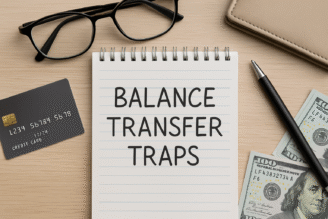5 Steps to Building a Good Credit Score in the U.S.
Want to know how to build a good credit score from scratch in the United States? Learn with this comprehensive and detailed guide!
Understand how to build a good credit score in the USA

A strong credit score is more than just a number, it’s a gateway to financial opportunities. Whether you’re applying for a mortgage, financing a car, or securing a business loan, lenders in the U.S. rely heavily on your credit profile to determine risk. A good score not only improves your chances of approval but can also unlock lower interest rates, better repayment terms, and higher credit limits.
But building a good credit score doesn’t happen overnight. It’s the result of consistent financial habits and strategic decisions.
Below, we break down five essential steps to help you strengthen your creditworthiness and set yourself up for long-term success.
Step 1: Understand What Makes Up a Credit Score
Credit scores are calculated based on several key factors: your payment history, total debt, length of credit history, types of credit used, and new credit inquiries. Unlike traditional assumptions, it’s not just about paying bills—it’s about consistency, diversity of credit, and responsible management over time.
By learning how these elements work together, you’ll know where to focus your efforts to make the biggest improvements.
Step 2: Pay Bills on Time, Every Time
Nothing impacts your credit score more than payment history. Even a single missed payment can cause your score to drop by dozens of points and remain on your credit report for up to seven years.
To avoid this:
- Set up automatic payments for recurring bills like credit cards, utilities, and loans.
- Use reminders on your phone or calendar to keep track of due dates.
- Prioritize high-risk accounts like credit cards and mortgages, since missed payments here hurt the most.
Example: If you miss a $50 credit card payment, the late fee might not seem huge, but the impact on your credit score could cost you thousands in higher interest on a future mortgage.
Consistency builds trust. Lenders reward borrowers who demonstrate reliability, and nothing shows reliability better than a flawless payment record.
Step 3: Manage Your Debt and Credit Utilization
Keeping credit card balances low relative to your limit is another crucial factor. A good rule of thumb is to keep your utilization below 30%—for example, if your limit is $10,000, try to keep your balance under $3,000.
Paying down high balances and avoiding unnecessary debt are practical ways to signal financial responsibility.
Step 4: Build a Solid Credit History
Credit history length matters. Lenders want to see long-term patterns of responsible use. If you’re just starting, consider secured credit cards or becoming an authorized user on someone else’s account.
For established borrowers, avoid closing old accounts unnecessarily, since older lines of credit can improve your overall profile.
Step 5: Monitor and Improve Continuously
Regularly reviewing your credit reports helps you spot errors, disputes, or fraudulent activity that could lower your score. Free annual reports are available from the three major bureaus (Experian, Equifax, and TransUnion).
If your score isn’t where you want it to be, don’t get discouraged. Every payment made on time and every balance lowered adds up. Over time, these actions create a stronger credit profile and open doors to better financing opportunities.
Common Mistakes to Avoid
Even with the best intentions, some habits can hold you back. Applying for too many credit cards at once can create multiple hard inquiries and lower your score.
Ignoring small bills, such as medical or utility accounts, might seem harmless but can quickly end up in collections and damage your profile.
Closing accounts impulsively without considering their impact can shorten your credit history and hurt your overall rating.
Finally, carrying high balances, even if you make payments on time, signals financial stress to lenders and can drag your score down. By being aware of these pitfalls, you stay on track and build a stronger financial foundation.
Final Thoughts
Building a good credit score in the U.S. takes time, consistency, and strategy. By understanding how scores work, paying bills on time, managing debt wisely, building history, and monitoring your progress, you’ll create a profile that lenders trust.
Remember, a strong credit score doesn’t just improve access to loans—it lowers borrowing costs, creates negotiating power, and strengthens your overall financial freedom.
The earlier you start and the more disciplined you are, the faster you’ll see results. And once you reach that excellent score, maintaining it becomes much easier than starting over.
A good score isn’t just about numbers, it’s about the doors it opens: homeownership, business growth, investment opportunities, and peace of mind.






